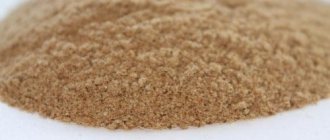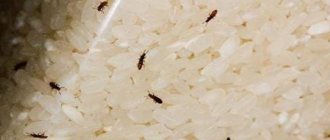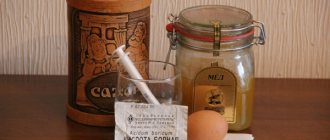Pies, pizza, cakes, dumplings, and other favorite dishes cannot be prepared without flour. It is the basis of any test. Often purchased for future use. Only over time it deteriorates, cakes, baked goods rise poorly, and a very strange taste and unpleasant smell appear. Even worse, pests attack.
Today we will find out the expiration date of flour. At the same time, we’ll tell you about the dependence on the degree of purification and select suitable storage periods. Bonus - away, bugs! We share proven ways to protect flour from food pests.
Shelf life of flour at home
State standards give manufacturers the right to independently set expiration dates for flour. Only the grain processing enterprise must necessarily establish the production date and storage nuances. The average shelf life according to GOST data is 6-10 months. Highly purified products lie quietly for up to a year. But the type of cereal used also has an impact.
What container do you store flour in?
In bagsIn cans
What flour can be stored for up to a year:
- wheat;
- pea;
- bird cherry;
- from chickpeas.
Up to six months:
- rye;
- buckwheat;
- rice;
- barley flour.
The shortest shelf life is for ground corn and coconut. Also, do not leave pancake flour for a long time. It includes milk powder, egg powder, various cereals, improvers.
The more bran and plant husks in a product, the shorter the shelf life. These inclusions promote oxidation, resulting in a rancid taste and specific aroma. Therefore, whole grain varieties spoil faster.
The shelf life of wheat flour is 6-12 months. Other species are stored less often. Optimum temperature +5-25 degrees, humidity up to 70%. Choose dry places, protected from sunlight.
How should you store flour?
Manufacturers actively use paper bags. Sealed packs can be left as is. It is advisable to place the packages in a bucket, tank, pan and close tightly.
Open packages cannot be left behind. Especially in the kitchen. Changes in temperature and humidity negatively affect the quality of grain products and reduce shelf life. We recommend refilling.
Suitable container:
- linen bags. They retain their properties perfectly, the product “breathes”. Disadvantage - insects may appear;
- glass jars. Protect from moisture, bugs, and foreign odors. Suitable only for dry flour. A slightly damp analogue in a sealed container will become moldy;
- plastic containers, barrels. Similar to glass jars. Protects from moisture, odors, insects.
When using cloth bags, we recommend pre-soaking the fabric in a concentrated salt solution and then drying it.
Where to keep flour
For long-term storage in an apartment, places with low humidity and constant temperature are suitable. It can be:
- Kitchen cabinets.
Housewives usually use wall-mounted ones, but those that stand on the floor are much more suitable. Below, the temperature is usually 1-2 degrees lower and more stable.
- Pantry.
- Refrigerator shelf.
- A balcony or loggia is suitable for storing large supplies in winter, provided that they are glazed and insulated.
It is recommended to allocate a separate shelf for flour or place it away from vegetables.
Basic conditions for storing flour
In addition to the correct temperature, it is important to choose dry places. When humidity exceeds 70%, fungi begin to develop, mold appears, and lumps form. The second important factor is protection from sun rays. Down with the transparent dishes. We choose dark rooms and cabinets. Otherwise, the product will spoil long before the expiration date.
We should also talk about pests. Annoying bugs appear even in absolutely clean rooms and cabinets. They often end up together with other cereals from stores and warehouses. Flour infested with larvae cannot be saved. Only we can prevent contamination of new stocks. We offer proven methods.
How to properly store flour at home to prevent bugs from getting in:
- clean dishes, place. Before replenishing supplies, we carry out general cleaning. We wash and dry the containers. We treat shelves and cabinet walls with a solution of table vinegar, sometimes using white;
- tightness. Linen bags retain their properties better. Only uninvited guests deal with them quickly. Tightly sealed containers will reliably protect;
- add additives. Pests are afraid of the smell of lavender, bay leaves, and garlic. You can add dried citrus peels.
The best containers and methods for storing flour
Contaminated flour has never been thrown away before. Housewives heated it in the sun, in the oven, sifted it, and then used it for culinary needs. Getting rid of several bags of supplies is very expensive for the family budget. Today, grain products are purchased in smaller quantities. It's easier to throw away the damaged bag and buy a replacement.
The old method of fighting bugs is rusty nails and metal lids. Objects are immersed directly into the general mass.
What to choose for kitchen storage
The microclimate in the kitchen does not meet storage requirements, so an airtight container . The ideal option is a jar with a tight lid. Cereal jars are great for keeping a little flour on the kitchen counter so you can add a few spoonfuls to cheesecakes, omelettes, or breading. And store the main supply in the pantry.
Features of cans for bulk products
Jars for storing flour and other bulk products are made of glass, plastic, and ceramics. What to choose?
- Glass is the best material , as it does not allow air, odors, or moisture to enter. But clear glass is vulnerable to light, so you need to choose closed cabinets for storage.
- Ceramics are beautiful containers that do not transmit light and can be placed on open shelves. Suitable for small volumes and short-term storage.
- Metal is not a desirable choice for all bulk products. It's strange that such sets are still sold.
- Plastic is light and inexpensive. Choose dense and durable types of food-grade plastic.
An airtight lid is the main requirement for a storage container in a hot kitchen. There are different types of lids for kitchen jars:
- Screw-down – a simple and familiar mechanism. But if you move off the thread, there will be air holes.
- Covering the top is not always comfortable; over time, it can stretch and allow moisture to pass through. It is better to choose to store extra supplies.
- With clamps and locks - they retain the microclimate inside the container well if supplemented with silicone or rubber seals. Convenient if you need to open it once and pour in flour. Give preference to folding ones rather than removable ones, so as not to waste time, look for space on the table and not get lost.
- Insert lapped ones are the most convenient for the kitchen; they do not require much time to open and close. The seals do not let air into the jar and leave no chance for bugs to get inside.
- With a sifter - especially for flour, there are jars with a sieve in the lid, they can be used to store small quantities or as a measuring cup.
- With a dispenser, you don’t have to open the lid every time; just open the hole slightly.
Containers with a volume of one liter or more are suitable for storing flour in the kitchen. There are three-liter and five-liter jars made of glass and plastic. The size depends on the quantities you buy, store and use flour. You can buy a set of jars for different varieties, for example, a liter for rye, a three-liter for wheat and a half-liter for flax.
Plastic and polypropylene containers
If you prefer a lightweight plastic flour storage container, be sure to smell it before using it. Some plastics, including food grade plastics, continue to emit specific odors even after washing and repeated use. Such containers are not suitable.
The advantage of a square container is convenience - here you can immediately take a measuring cup without using a spoon and without spilling the dirty ingredient on the table. Plastic flour containers are also equipped with airtight lids.
Tall plastic containers with lids, which contain dispensers , are useful for those who often prepare dishes that require the addition of several tablespoons of flour. It is convenient to pour bulk products through the holes without opening the lid completely.
Due to their low weight, plastic containers do not load hanging cabinets and shelves. Flat lids allow you to stack containers on top of each other, saving space.
Birch bark containers
Stylish birch bark jars can also be used, but only if your kitchen is dry and pest-free. Birch bark itself is not afraid of moisture, but allows it to pass through, since such containers cannot boast of tightness.
Products made from birch bark have natural antibacterial properties because birch bark contains silver ions. Before pouring a new portion into a birch bark container, always pour out the remainder and, if necessary, wipe and dry the container.
If you don't want to buy a special container for storing flour and don't have a suitable container, use plastic bottles or jars from canned vegetables. But do not leave perishable products in bags or bags.
How to tell if flour has gone bad
A simple method is to smell it. A musty, bitter, unpleasant odor indicates spoilage. A specific aroma may appear long before the expiration date. The reason is a violation of storage rules. Sometimes spoiled products end up at home.
Signs of damage:
- presence of mold. We examine it carefully. Plaque appears on the walls of the dishes, along the edges. Further, inclusions of a different shade become noticeable in the total mass;
- hard lumps. Tracking is allowed. Such lumps easily crumble when pressed;
- rancid taste. You don't have to eat several spoons. We taste it with the tip of our tongue and spit it out.
It is impossible to extend the shelf life of a product that is starting to deteriorate. When the degree of damage is small, we actively use it. If unpleasant signs actively appear, it is better to get rid of it.
What should you do to prevent insects from appearing?
To prevent the presence of ubiquitous ants, bugs and other pests in flour, you must adhere to the rules for storing the component and, if possible, use the following recommendations:
Insects in flour
- You can transfer the composition from the usual containers into fabric bags. They must first be soaked in saline solution, which is also an excellent natural preservative.
- Some housewives put peeled garlic cloves in a container with a product whose pungent odor repels insects. True, specific notes may become attached to the product.
- A good effect is achieved by placing the container with the component in a bag or bag lined with dried calendula petals.
In addition, there are quite original methods of repelling insects. Since ancient times, long nails were stuck vertically into a container with dry mass, after which the insects no longer appeared.
Each time before using the powder, you need to check its quality. A spoiled product acquires a sour smell and uncharacteristic bitterness. If a dry composition smells cold, this indicates an increased moisture content in it. Before use, the mass must be dried on parchment paper, otherwise the result will be unpredictable.











